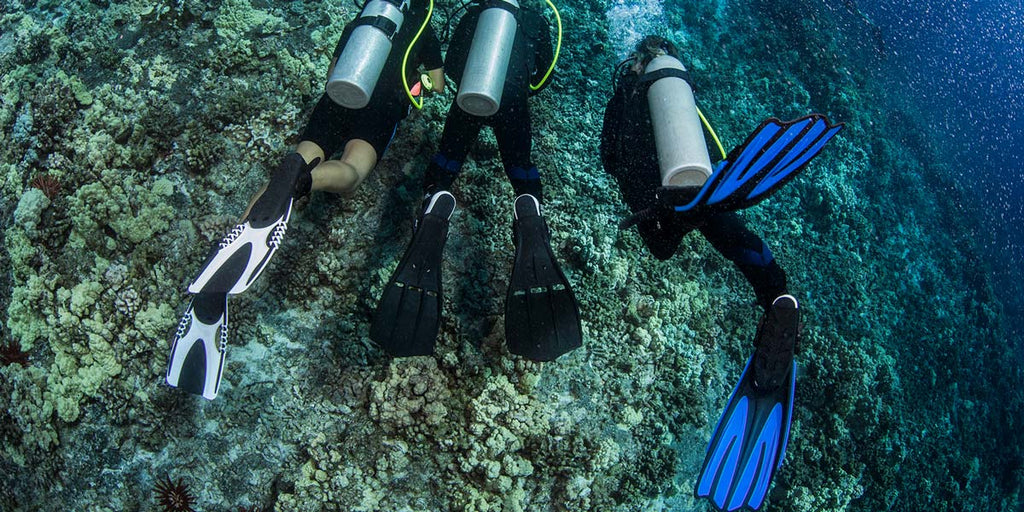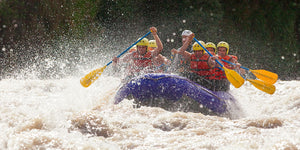Kicking Techniques for Scuba Divers

When you first learn to scuba dive, you tend to kick in whatever way moves you forward. Despite the training you get during your certification course, it’s easier to simply do what feels like it works, without regard to energy expulsion or logic. It’s a lot like learning to drive — with so many processes going on at one time, it feels impossible to critically think about every single one of them.
But as you begin to develop that automatic action that comes with regular practice, you’ll learn that there are certain kicks that can be more beneficial for you in the long run. Some require less energy, saving you air. Others are better because they don’t require as much movement, making them great for tighter spaces like caves.
No matter what your reason is, trying each of these styles out is a good idea and will allow you to adapt to new environments and situations more easily.

The Flutter Kick
The Flutter Kick is usually the first style you’ll learn in your certification courses. When using it, your body should be in a straight, horizontal line with your legs fairly straight. From here, your fins alternate moving up and down, with the motion coming primarily from your hips so that your knees don’t bend much.

Modified Flutter Kick
This kicking style is one of the most common used. It uses the same basic premise as the Flutter Kick but allows for more bend in the knees. This decreases speed, but scuba diving is hardly about who can make it to the endpoint the fastest. Overall, it minimizes speed but also minimizes effort, requiring less air from your tank.

The Scissor Kick
The Scissor Kick starts with your feet in nearly the same position as the Flutter Kick, with your legs fairly straight and feet together. But instead of moving your fins in an up-and-down motion, you’ll move them apart and together — like a pair of scissors. On the close, you’ll need to make the motion somewhat rapid. This will give you a long gliding motion toward the end of one kick. This kick is particularly nice because it allows you to swim closer to the ocean floor without stirring up sand or disrupting the environment.

The Frog Kick
practice the Frog Kick, your legs should be slightly apart as if you are using a Scissor Kick. Instead of bringing together your entire legs, your knees should be bent at a 45-degree angle, with the bottoms of your blades facing each other. Move your fins inward and outward, similarly to the scissor kick. While this style of kicking is great for mellow cruising or confined spaces, it’s important to note that it does not work well with certain types of fins, such as split fins.
While we highly recommend you learn to correctly practice a variety of kicking styles, it’s hardly ever essential for you to know one specific style. However, understanding which ones require less energy from you and which ones work well in certain environments will give you a great set of skills in your arsenal to adapt well to various situations.
Credits: Photo byMarco Assmann (1) (2) and Jeremy BishopUnsplash
- Watersports Staff






Comments 0